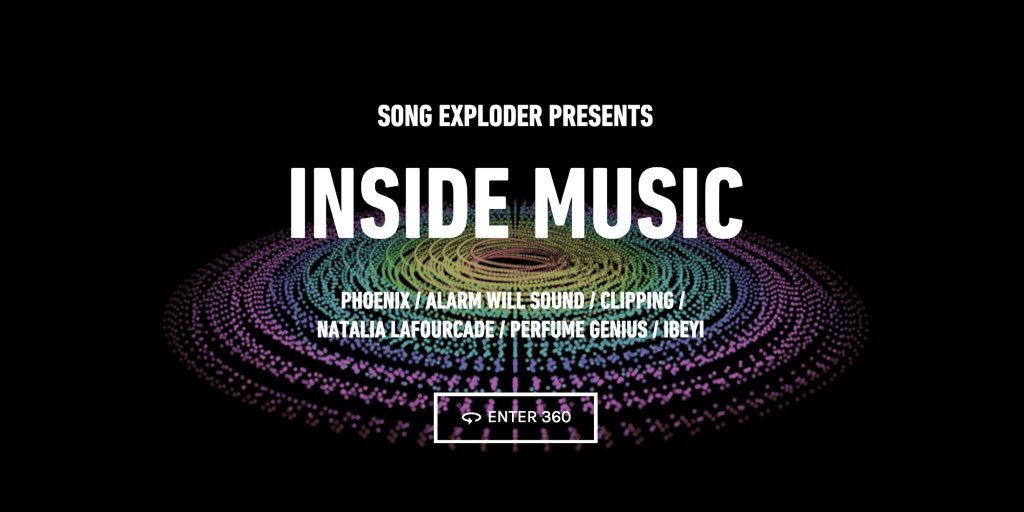
One of my great joys as Alarm Will Sound’s conductor is that when we perform John Luther Adams’s Ten Thousand Birds, I have absolutely nothing to do. We perform the piece is a kind of environmental installation, with players all around the audience playing bird songs that John has imaginatively realized for instruments. It’s not a sit-down event: the performers constantly move among the audience members, and it’s up to each listener to make his or her own choices about where to be when. The path that one chooses through the space creates a unique realization of the piece. So each audience member gets to be a kind of auxiliary composer, moving through the space and making his or her own decisions about what voices of the piece to hear when. And since the piece doesn’t need a conductor, I get to enjoy this experience too.
It’s one of those “you had to be there” sorts of experiences that’s hard to convey to someone who didn’t see the show. And on one hand, that’s great: I want Alarm Will Sound to create unique experiences. But I’ve also been interested to find ways to bring this sort of interactive musical experience to people who can’t actually be there in person. We made a 360-degree video of the piece, but that leaves out the interactive element. How do you film or otherwise record an interactive experience like Ten Thousand Birds?
It struck me a year ago that virtual reality seemed poised to open up possibilities for the interactive experience of music. So I reached out to Alexander Chen at Google Creative Lab to start a conversation about an Alarm Will Sound virtual reality project. Alex was an obvious person to reach out to for this conversation: an artist and viola player as well as an engineer, he’d created the delightful Les Paul doodle as well as some brilliant musical games in the Chrome Music Lab. And it turned out that I’d connected with the right person at the right moment: Alex was an AWS fan, and Google Creative Lab was looking at what to do in the virtual reality space around the launch of Daydream.
I proposed that we create a virtual reality version of Ten Thousand Birds. My dream was to make a photo-realistic video of the piece that one could walk through, choosing to get up close to one player or another. This kind of approach felt like the best way to preserve in virtual reality the ethos of John’s music, which is very much about natural environments. But realizing the piece in this way was beyond what the virtual reality technology at hand could offer. And, really, the private smartphone-strapped-to-your-head experience of virtual reality seemed antithetical to the communal spirit of John’s music.
When we got mired trying to solve these problems, Alex suggested that we do something simpler and more open-ended: sticking with the idea of spatially exploring the voices in a piece of music, but doing so in an abstract and general way that would work with any piece of music. I was excited about creating something that other musicians could use to bring their own work to virtual reality. And the vision of exploring the voices of a piece of music reminded me of what Hrishikesh Hirway was doing with his Song Exploder podcast. It turned out that Hrishikesh was an old roommate of Alex’s and excited to get involved with the project.
So we started work on a virtual reality interface that would let you move among the different voices of a piece of music, turning some on or off. The “Roadrunner” movement from John Adams’s Chamber Symphony (from the recent Splitting Adams album that we made with Meet the Composer) leaped out as a great piece from Alarm Will Sound’s repertoire to be explored this way. Adams says that the piece is inspired by the chaos of a kid’s birthday party, and he’s right when he writes that it stretches “the edge of comprehensibility”: there’s a lot here to take in all at once. And the density of the music means that a lot more can be understood by exploring the music’s layers closely and individually, which is just what this interface lets you do. I get to hear the music like this when I’m studying and rehearsing it, but listeners generally have no choice but to hear all of the voices simultaneously. Hidden connections in the music — like the way the bass line from the beginning comes back in elephantine form after the violin solo — suddenly become much clearer. It’s fun also to zoom in on the manic and acrobatic woodwind and string lines, which harken back to the Looney Toons character that inspired the title
I’m thrilled with what we’ve started with Inside Music. As with Ten Thousand Birds, when I put on my headset and start the app, I get to be a part of creating my own musical experience, to be a kind of co-composer. It’s a new way to experience music, and that’s something I’m always eager for Alarm Will Sound to offer. I’m bowled over by the other work already on the platform by clipping, Phoenix, Perfume Genius, Ibeyi, and Natalia Lafourcade. And I hope other artists will make their own music available through Inside Music. So check it out! And let us know what you think on Twitter or Facebook. Are there other features you’d like to see added? (Google’s open-sourced the Inside Music code, so anyone can take what’s been started here and build on it.) And are there other kinds of experiences that you think new technology could bring to the kind of music that we play? We’re dreaming about these possibilities, and we’d love to hear from any of you who are too.

